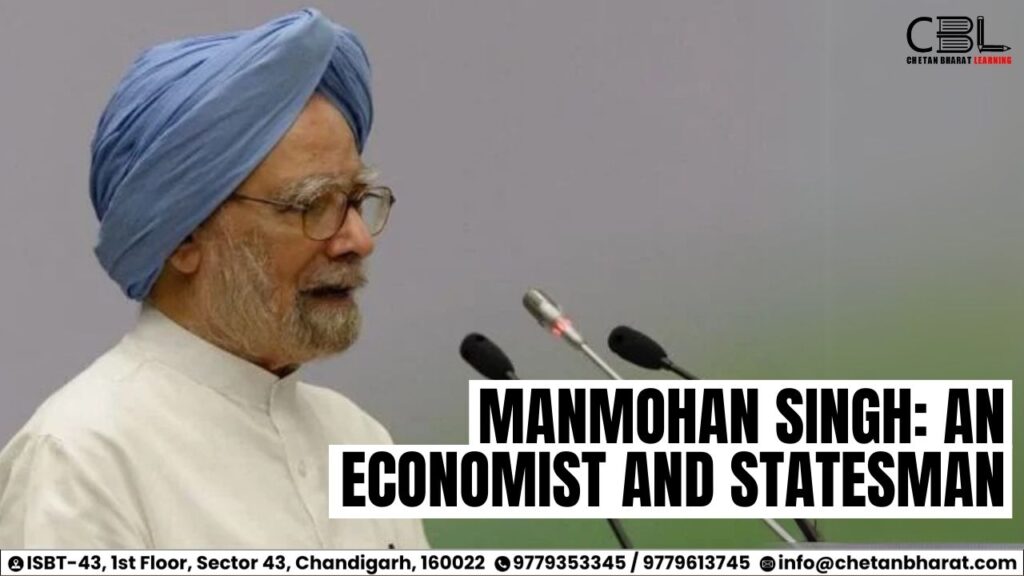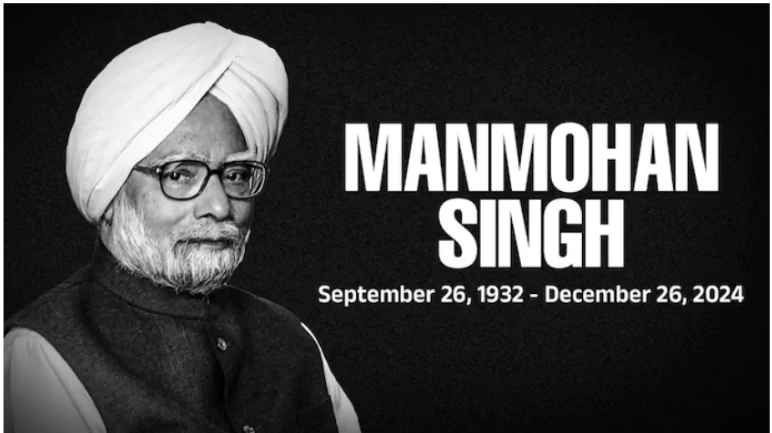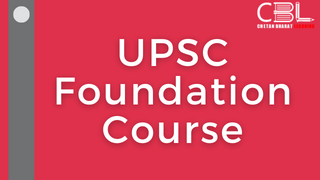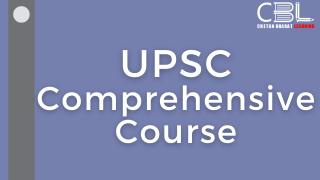
Important for UPSC, State PCS
Prelims: Manmohan Singh . Reserve Bank of India, Right to Information, Padma Vibhushan, India–United States Civil Nuclear Agreement . Chief Economic Advisor .
Mains: General Studies Paper 2 & 3- Governance . Economic Reforms of 1991. Liberalization . Privatization . Globalization .
Context-
Personal Details
- Born: September 26, 1932, Punjab, undivided India.
- Education:
- Bachelor’s and Master’s in Economics (Punjab University, 1952, 1954).
- Honours degree in Economics (Cambridge University, 1957).
- D.Phil in Economics (Oxford University, 1962).
- Published book: “India’s Export Trends and Prospects for Self-Sustained Growth” (Clarendon Press, Oxford, 1964).
- Key posts in the Government of India,
- Chief Economic Advisor (1972–1976)
- Governor of the Reserve Bank (1982–1985)
- Head of the Planning Commission (1985–1987).
- Political Career
- Rajya Sabha Member: 1991 to 2019 from Assam, 2019 to 2024 from Rajasthan.
- Never been a member of the Lok Sabha.
- Leader of Opposition, Rajya Sabha: 1998 to 2004.
- Prime Minister of India: 2004–2014 (two terms).
- Rajya Sabha Member: 1991 to 2019 from Assam, 2019 to 2024 from Rajasthan.
- Finance minister: From 1991 to 1996 in P. V. Narasimha Rao govt.
- Awards and Honours
- Adam Smith Prize, University of Cambridge (1956).
- Euro Money Award for Finance Minister of the Year (1993).
- Asia Money Award for Finance Minister of the Year (1993, 1994).
- Jawaharlal Nehru Birth Centenary Award (1995).
- Padma Vibhushan (2010).
- Honoured with degrees from Cambridge and Oxford Universities.

Role of Manmohan Singh as Finance Minister (1991–1996)
This crisis served as the catalyst for transformative economic reforms that would reshape India’s economic trajectory.
Manmohan Singh’s tenure as Finance Minister under Prime Minister P.V. Narasimha Rao is considered a turning point in India’s economic history.
At the time, India faced a severe balance of payments crisis, with foreign reserves barely enough to cover three weeks of imports.
The situation was dire, with the government forced to pledge gold reserves to secure emergency loans.
Economic Reforms of 1991
Liberalization
Liberalization marked a departure from India’s highly regulated and protectionist economic policies. Key steps included:
- Dismantling the License Raj: The “License Raj” system required businesses to obtain multiple government approvals for setting up and operating enterprises.
- Singh eliminated this complex regime, significantly reducing bureaucratic red tape and making it easier for businesses to start and expand operations.
- This fostered a more business-friendly environment, encouraged entrepreneurship, and allowed market forces to play a greater role in determining production and distribution.
- Easing Industrial Restrictions: Industrial sectors were freed from stringent regulations.
- Policies that required government approval for capacity expansion, technology upgrades, and exports were relaxed.
- This step boosted productivity and competitiveness in domestic industries.
- Reduction in Tariffs and Quotas: Import restrictions, such as quotas and high tariffs, were reduced. This encouraged competition and integration with the global market.
- Indian consumers and industries benefited from access to better-quality goods and technologies at competitive prices.
Privatization
Privatization aimed to reduce the government’s dominant role in the economy and allow greater private sector participation.
- Reduction in Public Sector Monopoly: Sectors such as telecommunications, airlines, and banking, which were previously state monopolies, were opened to private players.
- This improved efficiency, innovation, and service delivery in key sectors.
- Divestment in Public Sector Enterprises (PSEs): The government started divesting its stake in underperforming or non-strategic public sector enterprises.
- While full privatization was limited, disinvestment raised funds and encouraged better management practices.
- Private investment brought new technologies and managerial expertise to these enterprises.
- Encouraging Private Investment: Singh promoted policies to attract private investment in industries, infrastructure, and services. These steps fostered a more competitive economy.
- Increased private sector participation spurred economic growth and job creation.
Globalization
Globalization was a cornerstone of the 1991 reforms, focusing on integrating India’s economy with the global market.
- Encouraging Foreign Direct Investment (FDI): The reforms allowed foreign companies to invest in multiple sectors, including manufacturing, retail, and infrastructure.
- Foreign Direct Investment (FDI) inflows brought capital, advanced technology, and managerial expertise to India.
- Opening the Economy: Indian companies were encouraged to compete globally, and foreign businesses were welcomed to operate in India. This broke the isolationist economic policies of the past.
- Indian firms gained exposure to international markets, leading to improved efficiency and innovation.
- Trade Liberalization: Tariffs and import duties were reduced, and import licenses were abolished for most goods.
- This enhanced India’s trade relationships and enabled businesses to access global supply chains.
Tax Reforms
Manmohan Singh’s reforms also aimed at modernizing the tax system to boost revenue and economic activity.
- Simplification of Tax Structure: The multi-layered and complex tax system was overhauled, making it easier for individuals and businesses to comply.
- This increased transparency, reduced tax evasion, and improved government revenue.
- Introduction of Modern Tax Policies: Measures like reducing corporate and personal income tax rates encouraged compliance and reduced the tax burden on citizens and businesses.
- Enhanced disposable incomes, spurring consumption and investment.
Exchange Rate Reforms
The exchange rate reforms addressed the critical balance of payments crisis that India faced in 1991.
- Devaluation of the Indian Rupee: The rupee was devalued in two stages by a total of approximately 18%.
- This made Indian goods cheaper in international markets, boosting exports and earning much-needed foreign exchange.
- Export-oriented sectors like textiles, gems, and handicrafts benefited, leading to improved trade balances.
- Transition to Market-Determined Exchange Rates: The fixed exchange rate system was gradually replaced with a market-driven mechanism, allowing the rupee’s value to reflect global economic realities.
- This stabilized foreign exchange reserves and increased investor confidence.
- Encouraging Foreign Investments: By aligning the exchange rate with global market trends, Singh made India more attractive to foreign investors.
- Foreign investments flowed in, alleviating the foreign exchange crisis.
Fiscal Discipline
Recognizing the unsustainable fiscal deficit, Singh introduced measures to improve the government’s financial management.
- Reduction in Subsidies: Subsidies on non-essential items like fertilizers, fuel, and electricity were reduced to curtail government expenditure.
- This helped narrow the fiscal deficit, though it was met with initial resistance.
- Rationalization of Government Spending: Singh emphasized spending on productive sectors like infrastructure and education while cutting back on wasteful expenditures.
- Improved efficiency in public spending and directed resources toward growth-oriented activities.
- Increased Revenue Generation: Steps were taken to broaden the tax base, improve tax compliance, and increase government revenue.
- A more balanced fiscal policy was established, reducing reliance on external borrowing.
Impact of 1991 LPG Reforms
- Transformed India from a heavily regulated, inward-looking economy to one of the fastest-growing economies globally.
- Boosted industrial growth, exports, and foreign investments.
- Elevated India’s economic status, paving the way for its emergence as a global economic power.
Manmohan Singh Tenure as Prime Minister (2004–2014)
Manmohan Singh became Prime Minister in 2004, leading the United Progressive Alliance (UPA) government. His leadership focused on economic growth, social welfare, and fostering global partnerships.
Economic Growth
- During his tenure, India experienced unprecedented economic growth, with GDP growth rates averaging 8.5% between 2004 and 2009.
- India emerged as the world’s second-fastest-growing major economy, gaining recognition as an emerging global power.
Social Welfare Programs
- Mahatma Gandhi National Rural Employment Guarantee Act (MGNREGA): He launched in 2006, this program provided guaranteed 100 days of wage employment to rural households.
- Right to Information Act (2005): He empowered citizens to seek information from public authorities, promoting transparency.
- Right to Education Act (2009): He made education a fundamental right for children aged 6–14 years.
- Food Security Act (2013): He ensured subsidized food grains for two-thirds of the population.
Infrastructure Development
- He accelerated infrastructure projects, including highways, airports, and power generation.
- He launched the Golden Quadrilateral Project and focused on urban infrastructure through programs like Jawaharlal Nehru National Urban Renewal Mission (JNNURM).
Foreign Policy and Global Partnerships
- Indo-US Civil Nuclear Deal (2008) is a landmark agreement that ended India’s nuclear isolation and allowed access to civilian nuclear technology.
- He strengthened relations with neighbouring countries and major global powers like the US, Russia, and China.
- He played a key role in the BRICS grouping, fostering collaboration among emerging economies.
Financial Sector Reforms
- He introduced measures to strengthen India’s banking sector, including the promotion of financial inclusion and digital banking.
- He expanded access to credit for small and medium enterprises (SMEs) and rural entrepreneurs.
Climate Change and Energy Security
- He advocated for sustainable development and renewable energy.
- He promoted the development of solar power through the National Solar Mission.
Legacy of Manmohan Singh
Despite challenges, Manmohan Singh’s legacy remains significant. He is often credited as the architect of modern India’s economic transformation.
- Economic Architect: Singh’s reforms in the 1990s laid the foundation for India’s rise as a global economic power.
- Social Reformer: He focused on inclusive growth through landmark social welfare programs.
- Global Statesman: He elevated India’s status on the world stage through strategic diplomacy and economic partnerships.
- Personal Integrity: He is known for his honesty, humility, and commitment to public service.
CBL Practice Questions for Prelims
Dr. Manmohan Singh’s Role as Finance Minister
During his tenure as Finance Minister in the early 1990s, Dr. Manmohan Singh is credited with:
- Liberalizing India’s economy by reducing trade barriers and encouraging foreign investment.
- Introducing the Goods and Services Tax (GST).
- Launching the National Rural Employment Guarantee Act (NREGA).
Select the correct answer using the codes below:
a) 1 only
b) 1 and 2 only
c) 1 and 3 only
d) 1, 2, and 3
Answer: a) 1 only
CBL Mains Practice Question
Dr. Manmohan Singh’s tenure as Prime Minister is often debated in political circles. Discuss the strengths and weaknesses of his leadership in Indian politics, considering both his economic legacy and his political management in a coalition government.




Leave a Reply
You must be logged in to post a comment.